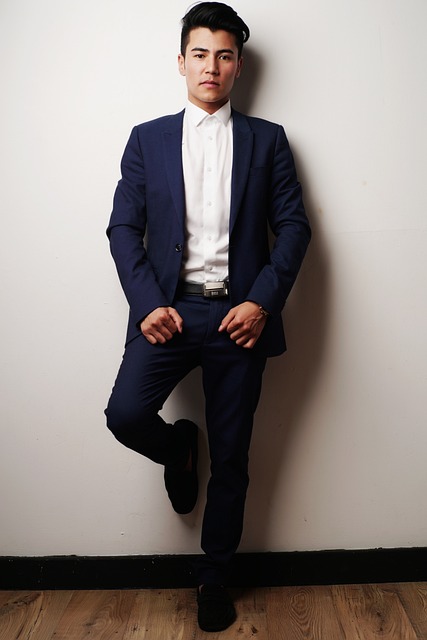In the bustling corporate landscape of Singapore, choosing the right business wear is about more than just style; it’s about making a statement. As professionals navigate the world of smart business wear an often-overlooked aspect is the psychology of color, a subtle yet powerful tool in shaping perceptions and outcomes. This article delves into the nuanced world of color choices in business attire, exploring how different hues can influence interactions, convey messages, and ultimately impact business success. Whether it’s a high-stakes meeting or an everyday office scenario, understanding the psychology behind color choices can give professionals in Singapore an edge in their corporate attire decisions.
Associations with Different Colors

Understanding Color and Its Psychological Impact
Color psychology plays a pivotal role in shaping our perceptions, often subconsciously. For instance, blue, often associated with trust, calmness, and stability, is a favored choice in corporate settings. It projects a sense of reliability and professionalism. On the other hand, red, known for its association with energy, passion, and action, can be used to make a bold statement, drawing attention and signifying confidence and dynamism.
Cultural Variations in Color Perception
It’s essential to acknowledge that color perception is not universal; it varies significantly across different cultures. For example, while white is considered pure and clean in many Western cultures, it is associated with mourning in some Eastern cultures. Similarly, red, which is seen as aggressive or intense in some Western contexts, is viewed as a color of luck and prosperity in many Asian cultures. Understanding these cultural nuances is key when selecting colors for international business meetings or for professionals working in culturally diverse environments.
Color’s Role in Shaping First Impressions
First impressions in business can be heavily influenced by the colors one chooses to wear. A study by researchers at the University of British Columbia found that darker shades such as black or navy blue tend to convey a sense of seriousness and could be beneficial in situations where authority and leadership need to be projected. Conversely, softer shades like light blue or green can create an aura of approachability and friendliness, suitable for networking events or collaborative meetings. Thus, selecting the right color can be a strategic decision in managing first impressions and the subsequent business relationships.
Impact of Color on Mood
How Colors Influence Emotions and Behaviors

Colors have a profound impact on our emotions and behaviors, a phenomenon extensively studied in color psychology. For instance, blue, often seen as calming, can lower stress levels, making it an excellent choice for high-pressure business situations. Yellow, associated with optimism and creativity, might inspire more innovative thinking and energy. On the contrary, colors like gray, while professional, can sometimes appear dull or uninspiring, potentially dampening the mood in creative brainstorming sessions. Understanding these subtleties allows professionals to use color as a tool to influence the mood and dynamics of business interactions.
‘Power Dressing’ and its Psychological Effects
The concept of ‘power dressing’ in business often revolves around using color strategically. Darker colors like black or deep navy convey authority and command respect, often used in leadership roles or scenarios where one needs to assert dominance. Red, a color that stimulates and excites, can be empowering in negotiation settings or public speaking. By choosing specific colors, professionals can not only enhance their own confidence but also influence how they are perceived and responded to by others.
Effective Incorporation of Mood-Influencing Colors in Business Attire
Integrating mood-influencing colors into business attire requires a balance between personal style and the psychological impact of colors. For example, incorporating a red tie or scarf can add a touch of assertiveness to an otherwise neutral outfit. Alternatively, using pastel shades like soft blues and greens in accessories or shirts can create a more approachable and relaxed look. The key is to use colors in a way that aligns with the individual’s personality and the intended business context, whether it’s to command a room or to foster collaborative discussions.
Color Coordination in Professional Attire
Balancing Bold Colors with Neutrals
Effective color coordination in business attire is about striking a balance. Bold colors, when used judiciously, can make a powerful statement, but they need to be tempered with neutrals to maintain a professional look. For example, pairing a bright red blouse or tie with a charcoal grey suit can create a look that is both dynamic and grounded. Similarly, a vibrant blue jacket can be paired with a white shirt and black trousers for a sharp, attention-grabbing ensemble. The key is to use bold colors as accents rather than the primary focus of the outfit to avoid overwhelming the overall appearance.
Importance of Color Harmony in Creating a Cohesive Look

Color harmony is vital in crafting an outfit that looks cohesive and well-thought-out. This involves understanding the color wheel and how different colors complement each other. For instance, analogous colors (colors next to each other on the color wheel, like blue and green) can create a harmonious and pleasing look. Contrast can also be effective, like pairing a navy suit with a pale yellow shirt, but it’s important to ensure that the contrast is not jarring. The goal is to create an ensemble where colors complement each other and enhance the overall aesthetic, rather than competing for attention.
Industry-Specific Color Palettes
Different industries often lean towards specific color palettes. In more conservative fields like law or finance, traditional colors like navy, black, and dark grey dominate. In creative industries, such as marketing or design, there is more flexibility to experiment with a wider range of colors and combinations. Understanding the norms and expectations of one’s industry is crucial in choosing appropriate colors. For someone working in a conservative field aiming to add a touch of personality to their outfit, they might opt for a classic suit in a traditional color with a subtly patterned tie or scarf in softer hues. In contrast, those in creative fields might embrace bolder colors and unique combinations to reflect their creative output.
Selecting Colors Based on Intention
Choosing Wardrobe Colors for Desired Outcomes
The strategic selection of colors based on the intended outcome is a subtle yet powerful aspect of professional dressing. For instance, choosing blue for its calming and trust-inspiring qualities can be effective for mediating negotiations or counseling sessions. In contrast, incorporating elements of red might be more suitable for situations where one needs to exhibit confidence and energy, such as in sales pitches or persuasive presentations. The key is to align the color choice with the specific goals of the business interaction, using color psychology to reinforce the desired message and outcome.
Guidance for Different Business Occasions
Different business occasions call for different color strategies. For everyday office wear, a palette of neutral colors with occasional pops of muted colors can maintain professionalism while adding a touch of personality. For more significant business events like conferences or important meetings, sticking to classic, subdued colors can underscore professionalism and expertise. However, for networking events or company socials, brighter colors or interesting color combinations can foster approachability and open conversations. This tailored approach to color selection based on the nature of the business occasion ensures that the attire supports and enhances the professional objectives of each event.
Let Colors Determine Your Brand
Establishing Personal Brand Identity Through Color
Color is a potent tool in establishing and reinforcing personal brand identity in the professional realm. Consistently wearing certain colors or color combinations can become a signature style, making one instantly recognizable and memorable. For example, a professional who frequently wears shades of green may be associated with growth and vitality, subtly reinforcing these traits in their personal brand. Similarly, someone who often chooses monochromatic outfits might be perceived as sophisticated and elegant. By thoughtfully choosing colors that resonate with one’s personal brand values, professionals can strengthen their brand identity in the minds of colleagues, clients, and peers.
Consistency in color use is key to building strong brand recognition. This doesn’t mean wearing the same color every day, but rather having a well-defined color palette that features prominently in one’s wardrobe. This palette can be based on colors that best represent the individual’s personality, industry, and the message they wish to convey. Regularly incorporating these colors in business attire, whether in suits, dresses, or accessories, helps in creating a cohesive and recognizable personal brand image.
Creating a Signature Color Palette for Professional Wardrobe

Developing a signature color palette involves choosing a set of colors that not only appeal to the individual’s tastes but also align with their professional goals and industry standards. This palette should include a mix of base colors (like navy, black, or gray) and accent colors (such as red, blue, or green) that can be mixed and matched to create various looks. The chosen colors should complement the individual’s complexion and make them feel confident and empowered. Once established, this color palette can guide wardrobe choices, ensuring that each outfit contributes to a consistent and powerful personal brand statement.
Mastering Business Wear in Singapore with Apparel Empire
Making the right color choices is integral to professional success. Here at Apparel Empire, we have a deep understanding of the nuances of branding and color psychology and are the go-to destination for custom business wear in Singapore. Our in-house designers expertly guide professionals in selecting colors that align not just with their style but also with their business intentions and industry norms. By choosing Apparel Empire, you are not just selecting an outfit; you’re crafting a personal brand that resonates with confidence, authority, and sophistication. Ready to elevate your professional wardrobe with smart business wear that’s tailored to your success? Contact Apparel Empire today and let their expertise transform your corporate style narrative.